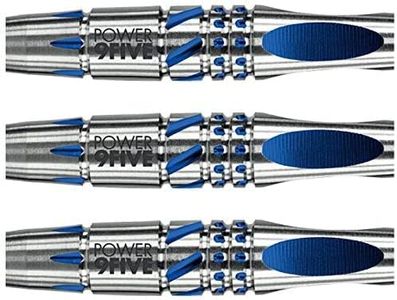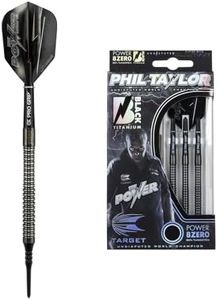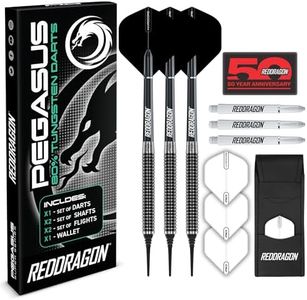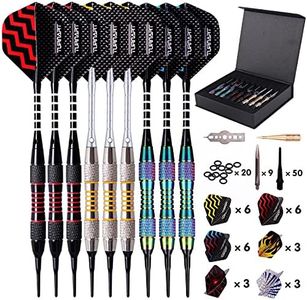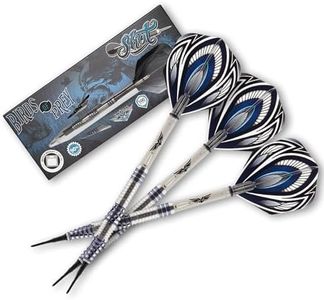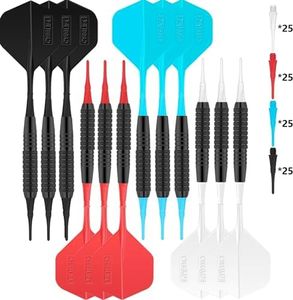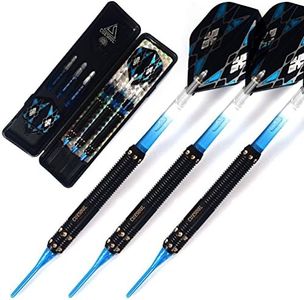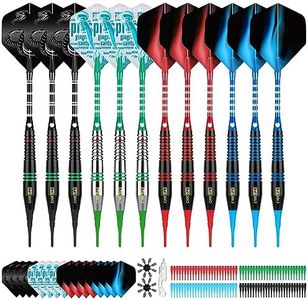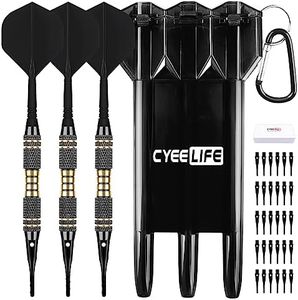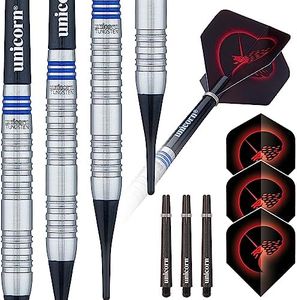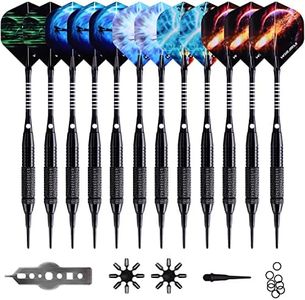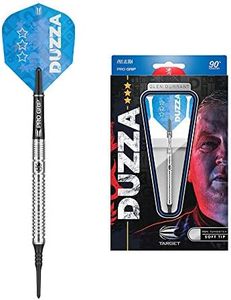We Use CookiesWe use cookies to enhance the security, performance,
functionality and for analytical and promotional activities. By continuing to browse this site you
are agreeing to our privacy policy
10 Best Soft Tip Darts
From leading brands and best sellers available on the web.Buying Guide for the Best Soft Tip Darts
Choosing the right soft-tip darts can greatly improve your enjoyment and performance in the game, whether you’re playing casually with friends or looking to get more competitive. The best dart for you is the one that feels comfortable, matches your playing style, and suits where you'll typically play. Paying attention to the key features allows you to find a dart set that matches your needs and helps you build good habits as a player.WeightWeight refers to how heavy each individual dart is, usually measured in grams. This is important because the weight affects how the dart flies and how it feels in your hand. Soft-tip darts generally range from about 14 to 20 grams. Lighter darts (14-16 grams) are easier to throw with speed and can be good for beginners or those with a lighter touch. Heavier darts (18-20 grams) tend to fly straighter and require less force. To find the right weight, think about your throwing style: if you prefer a gentler, more controlled throw, start on the lighter side; if you like forceful or straight throws, a heavier dart might suit you better. You might need to experiment to see which feels best for you.
Barrel MaterialThe barrel is the part of the dart you grip, and it can be made from different materials such as brass, nickel-silver, or tungsten. This affects the dart’s durability, grip, and size. Brass is affordable and good for beginners, but it can wear out faster. Nickel-silver is a bit more durable and has a shinier look. Tungsten is the most popular with experienced players because it allows for a thinner barrel at higher weights, giving better control and tighter groupings. When picking your dart, think about how much you play and how much grip and control you want—the more serious you are, the more you might appreciate a tungsten barrel.
Grip StyleGrip style refers to the texture and pattern on the dart's barrel, which affects how easily you can hold and release the dart. Some barrels have deep knurling (rough patterns), while others are smooth or have rings. A strong grip helps prevent slipping, but too much texture can make the dart feel uncomfortable. If you have sweaty hands or need more control, look for deep patterns; if you prefer a smooth, quick release, go for less texture. Try different designs to see which one feels most natural in your grip.
Length and ShapeDart barrels and shafts come in different lengths and shapes, affecting both comfort and flight. Shorter darts may feel more stable in quick throws, while longer darts offer more room for grip and can feel steadier for slower, more deliberate throws. The shape (straight, torpedo, or scalloped) changes how the dart sits in your hand. Your ideal length and shape depend on hand size and personal comfort—try different lengths and shapes to see which fits best and helps your aim.
Shaft MaterialThe shaft is the part between the barrel and the flight, and it's usually made of plastic, aluminum, or nylon. Plastic and nylon shafts are lightweight and flexible, good for beginners and those who don’t want to worry about frequent replacements. Aluminum shafts are more durable and slightly heavier, offering a more stable flight but can bend if dropped. Consider how often you play and how rough you are with your darts; beginners might start with nylon, while regular players might prefer aluminum for longevity.
Flight Shape and SizeFlights are the wings at the back of the dart, and they come in various shapes and sizes. Larger flights (standard shape) create more drag, helping stabilize the dart in the air, which is useful if you throw with a lighter touch. Smaller or slimmer flights are better for faster, more aggressive throws, as they cut through the air quickly. Your choice should depend on your throwing speed and style: if your darts wobble in the air, a larger flight can help; if you throw hard and fast, try smaller flights.
Point TypeSince these are soft-tip darts, they have plastic tips designed for electronic dartboards. Some are fixed, while others are replaceable. Replaceable tips are convenient if you play a lot or expect tips to break or dull. Make sure your dart’s tip matches your dartboard type and always have spare tips if you play regularly.
